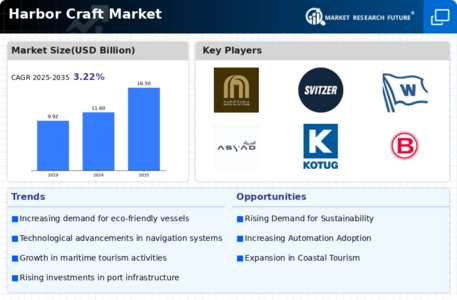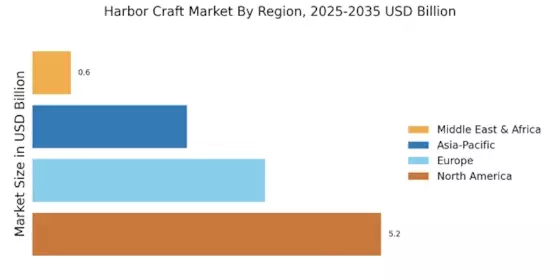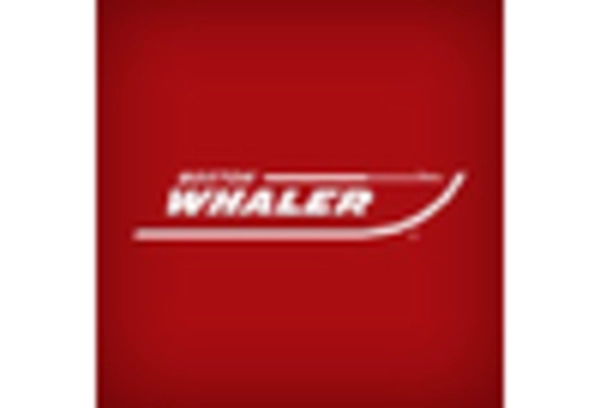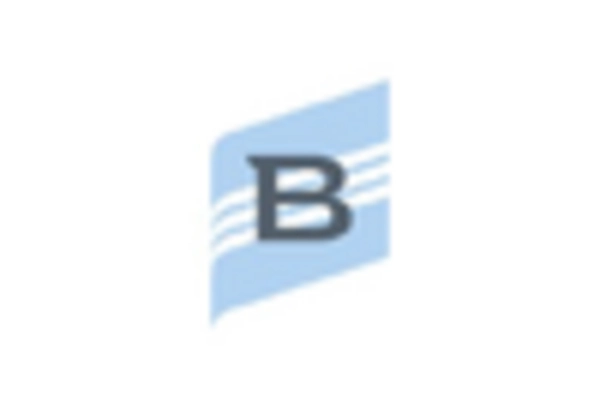Increasing Demand for Eco-Friendly Vessels
The Harbor Craft Market is witnessing a notable shift towards eco-friendly vessels, driven by heightened environmental awareness among consumers and regulatory bodies. As governments implement stricter emissions regulations, manufacturers are compelled to innovate and produce vessels that utilize cleaner technologies. This trend is reflected in the rising sales of electric and hybrid-powered boats, which are projected to account for a significant share of the market by 2026. The demand for sustainable practices is not merely a trend but appears to be a fundamental shift in consumer preferences, influencing purchasing decisions across various segments of the Harbor Craft Market.
Technological Innovations in Vessel Design
Technological advancements are reshaping the Harbor Craft Market, with innovations in vessel design and construction materials enhancing performance and safety. The integration of advanced navigation systems, automated controls, and improved hull designs are contributing to increased efficiency and reduced operational costs. For instance, the adoption of lightweight composite materials is enabling manufacturers to produce faster and more fuel-efficient vessels. This technological evolution is likely to attract a broader customer base, including commercial operators and recreational users, thereby expanding the market's reach and potential.
Expansion of Shipping and Logistics Operations
The Harbor Craft Market is poised for growth due to the expansion of shipping and logistics operations. As global trade continues to increase, the demand for efficient harbor craft to facilitate the movement of goods is likely to rise. This trend is particularly evident in regions with busy ports, where the need for tugboats, barges, and other support vessels is critical. The logistics sector's growth may drive investments in harbor craft, leading to advancements in technology and operational efficiency. Consequently, this expansion could significantly impact the Harbor Craft Market, creating new opportunities for manufacturers and service providers.
Regulatory Support for Harbor Craft Development
Regulatory frameworks are playing a crucial role in shaping the Harbor Craft Market. Governments are increasingly recognizing the economic potential of the maritime sector and are implementing policies that support harbor craft development. This includes financial incentives for manufacturers and operators who invest in modern, efficient vessels. Additionally, initiatives aimed at enhancing safety standards and environmental compliance are likely to foster a more robust market environment. Such regulatory support may encourage innovation and investment, ultimately benefiting the Harbor Craft Market as a whole.
Growth in Marine Tourism and Recreational Activities
The Harbor Craft Market is experiencing growth fueled by the rising popularity of marine tourism and recreational boating activities. As more individuals seek leisure experiences on the water, the demand for various types of harbor crafts, such as yachts and fishing boats, is increasing. According to recent data, the recreational boating sector is expected to grow at a compound annual growth rate of over 5% in the coming years. This trend not only boosts sales in the Harbor Craft Market but also encourages investment in related infrastructure, such as marinas and docking facilities.


















Leave a Comment